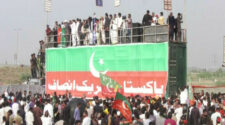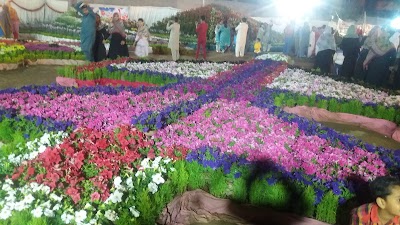India and Pakistan have been viewed as arch-rivals since the subcontinent’s division in 1947. Both countries have played a major role in each other’s national security and foreign policy since the beginning. Indo Pakistan’s strategic culture is based on emotions and bias. The community in both countries is dictated by emotional outbursts rather than rationality. This situation is not conducive to strategic stability between the two countries.
Bothcountries have played a major role in each other’s national security and foreign policy since then. After the development of the Kashmir crisis, such a viewpoint became even more exacerbated. As a result, past animosity situations have dominated the strategic culture of these two countries. This major factor of strategic culture also influences weaponry, defense, internal and external threat perception, and global and regional foreign attitudes. During the Cold War, the term “strategic culture” was created by Jack Snyder in his 1977 study “The Soviet Strategic Culture: Implications for Limited Nuclear Options.” He described strategic culture as the “totality of values, conditioned emotional reactions, and patterns of habitual behavior that members of the national strategic community have acquired through teaching or imitation and share in the context of strategy.”
In South Asia the current challenges confronting these two countries (India and Pakistan) are intertwined with their 74-year-old strategic culture. Several elements influence strategic stability, including new trends in regional and global politics, geo-strategy, geo-politics, and geo-economics. Pakistan is one of the world’s least secure countries. Pakistan currently spends almost $4 billion per year on defence, ranking 28th in the world, as a result of its security concern. All other military capacity indicators suggest that Pakistan possesses one of the world’s best-equipped armed forces, with a continuously expanding stockpile of nuclear weapons and ballistic missiles. However, statistics do not adequately reflect the country’s profound emotions of insecurity, which date back decades. Pakistan might be said to have been born in British colonial India as a home for a significant percentage of the region’s Muslim population. The 1971 war and the formation of Bangladesh, the Soviet military invasion of Afghanistan in December 1979, and the US-led Global War on Terror in 2001 that targeted Afghanistan are among the strategic inflection moments that have impacted Pakistan’s strategic culture. This is in addition to the identification of specific topics such as culture and religion, as well as principles and historical processes that influence policymakers’ views on national security management.
Pakistan’s strategic culture has retained basic features that are ingrained in the civilisation stream from whence it sprang. Pakistan’s strategic culture is intertwined with history, custom, religion, and national narratives. As a result, Pakistan’s strategic culture is a blend of malleability and toughness. Its resiliency originates from the culture in which it has flourished, providing Pakistanis with a sense of security, pride, and ownership over lives lived in some accordance with values and belief systems. This path-dependency makes cultures enduring since they have evolved inside civilisation settings. Feroz Hassan Khan has made a significant contribution to this field. He examines a variety of elements to explain Pakistan’s strategic culture. Historical experience, image of self, image of opponent, experience with strategic alliances, and the role of nuclear weapons, according to him, have all affected Pakistani strategic thought.
Similar themes are identified by Peter Lavoy, another excellent scholar of security and military concerns. Opposition to Indian hegemony, the primacy of defense requirements, nuclear deterrence, acceptance but not reliance on foreign aid, and affiliation with conservative Islamic causes are among the major aspects of Pakistan’s strategic culture, according to him. Over the last few decades, several academics and practitioners have looked at Indian strategic culture. Notably, some have questioned whether India even has a strategic culture at all. Because of its deep-rooted Hindu worldview of “life cycles and repeats,” George Tanham famously stated in an essentialist-oriented article that India lacks a strategic culture. 6 Other analysts have made arguments along the same lines. The Hindu caste system, according to Sandy Gordon, hampered cooperation and planning and hindered the formation of a strategic culture. “Our administration has had no strategic culture, and has never thought and planned forward, and has never been offensively,” said K. Subrahmanyam, one of India’s leading strategic strategists.
Before the 1947 split, India and Pakistan were one country with a common history. However, upon division, the two countries not only split demographically but also became enemies based on ethnic and religious divides. Tensions and difficulties were almost always present in their relationship. Since independence, some unresolved issues, notably in Kashmir, have become a significant concern. Both countries’ strategic cultures place a premium on security, military activity, particularly war decisions and combat tactics. It’s also founded on feelings and prejudice. Many aspects of both countries’ strategic cultures influence the region’s strategic stability.
Other difficulties have exacerbated the “prisoner’s dilemma” in South Asia. Because of power imbalances, proximity, a history of misunderstanding each other’s intentions, and a history of conflict and crises, maintaining deterrence stability between Pakistan and India is difficult. The major features of Pakistan’s strategic culture make deterrence stability much more difficult to establish. India and Pakistan have a long history of rivalry, which has resulted in wars, proxy wars, border conflicts, and crises. Nuclear deterrence is effective until it is no longer as effective. It may collapse tragically on the subcontinent if India’s leaders miscalculate and Pakistan’s nuclear bluff is called. Pakistan’s nuclear offensive defensive stance creates severe deterrence stability issues. The steps that have been discussed thus far are minor, and weapons control discussions are unlikely. Pakistani strategic culture feels it can afford a strategic rivalry, but Indian strategic culture appears to believe in bleeding Pakistan white. Under these conditions, South Asia’s strategic environment will be marked by ambiguity and volatility.
As I have stated, both countries’ strategic cultures are built on emotions and assumptions. Because of the nature of both nations’ interests, they have historically used propaganda against each other, increasing political tensions between them. If we go back in history, we can see that the relationship between the two countries has always been tense. Political tensions between the two countries influence the region’s strategic stability. Furthermore, the Kashmir Dispute and arms race between both states are also linked with the strategic culture of these nations and in future they can pose serious challenge to strategic stability of South Asia
Not only do Pakistan and India share a border, but strategic competition is also a geopolitical reality for both countries. Both countries’ strategic cultures have had a long-term impact on their relations with adversaries, leading to instability, uncertainty, and the possibility of new conflict. This strategic culture has given rise to factors that threaten the region’s strategic stability, but it has been concluded that the tensions and conflicts between India and Pakistan are historical, and that they can be resolved through the establishment of mutual, multilateral, and unilateral relations, as well as the continuation of peaceful dialogue between the two countries.
About Author: Saba Kiran an MS Scholar pursuing her degree in Strategic Studies. She is highly motivated to become a writer and researcher. Saba Kiran is currently, writing her thesis on “Ethno-political Conflict in Balochistan: The Way Forward.” Her areas of interest are to look into the internal security matters of Pakistan & the issues that arouse internally.













Excellent piece of writing